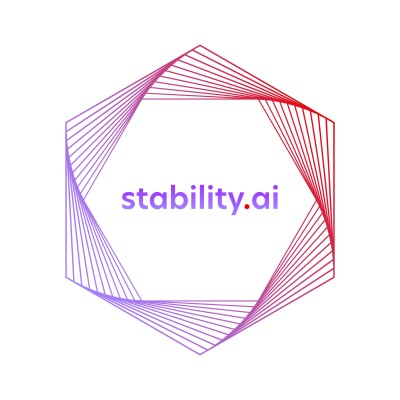The Dawn of Janus: DeepSeek's Game-Changer in AI Image Generation
January 30, 2025, 3:39 am

Location: Australia, New South Wales, Concord
Employees: 51-200
Founded date: 2016
Total raised: $494M
In the ever-evolving landscape of artificial intelligence, a new titan has emerged. DeepSeek, a Chinese startup, has launched Janus-Pro-7B, a model that claims to outperform established giants like DALL-E 3 and Stable Diffusion. This isn't just another AI tool; it's a paradigm shift. The launch has sent ripples through the tech community, stirring excitement and skepticism alike.
Janus-Pro-7B is a multimodal model, meaning it can process both text and images. Think of it as a Swiss Army knife for AI. It takes in descriptions and spits out images, or it can analyze existing images and provide insights. This dual capability is a game-changer for businesses and creatives alike. Imagine needing a custom image for a marketing campaign. Instead of hiring a designer, you can simply describe what you want, and Janus will create it for you. Efficiency meets creativity.
At the heart of Janus-Pro-7B lies a novel autoregressive framework. This framework decouples visual encoding, allowing for a more streamlined processing path. It’s like separating the wheat from the chaff, ensuring that the model can focus on what truly matters: generating high-quality images. The unified transformer architecture enhances flexibility, making it adaptable to various tasks. This means it can handle a wide range of inputs without breaking a sweat.
DeepSeek’s approach is not just about size; it’s about smart scaling. The Janus model has evolved from its predecessor, which had 1.5 billion parameters, to a staggering 7 billion. This leap in scale mirrors the trajectory of other successful models like GPT-3 and GPT-4. The more parameters, the better the performance—at least, that’s the theory. And with Janus-Pro-7B, DeepSeek is betting on this principle to deliver superior image generation.
But what does this mean for the industry? For one, it signals a shift in how we think about AI models. Traditionally, models have been siloed, each designed for specific tasks. Janus-Pro-7B blurs these lines, creating a versatile tool that can adapt to various needs. This could revolutionize fields like marketing, where the demand for unique, high-quality images is ever-growing. Businesses can save time and resources, allowing them to focus on strategy rather than execution.
The implications extend beyond just efficiency. Janus-Pro-7B’s ability to generate realistic images at scale opens new avenues for creativity. Artists and designers can use it as a collaborative partner, pushing the boundaries of what’s possible. Imagine a world where creative professionals can brainstorm ideas with an AI that understands their vision and can bring it to life in real-time. This is not just a tool; it’s a creative ally.
However, the launch has not been without controversy. The tech community is buzzing with discussions about the ethical implications of such powerful tools. With great power comes great responsibility. The ability to generate hyper-realistic images raises questions about authenticity and the potential for misuse. DeepSeek must navigate these waters carefully, ensuring that their technology is used for good.
Moreover, the competitive landscape is heating up. DeepSeek’s announcement has sent shockwaves through the stock market, affecting companies like Nvidia, which are heavily invested in AI technologies. The implications of Janus-Pro-7B’s capabilities could shift market dynamics, forcing competitors to innovate or risk obsolescence. This is a classic case of survival of the fittest in the tech world.
The release of Janus-Pro-7B is also a testament to the rapid advancements in AI. Just a few years ago, the idea of a multimodal model that could seamlessly integrate text and image processing seemed like a distant dream. Now, it’s a reality. This progress is a reminder of how quickly technology evolves, often outpacing our ability to adapt.
As we look to the future, the potential applications of Janus-Pro-7B are vast. From personalized marketing campaigns to innovative art projects, the possibilities are limited only by our imagination. Businesses can leverage this technology to create tailored content that resonates with their audience, while artists can explore new creative horizons.
In conclusion, DeepSeek’s Janus-Pro-7B is more than just a new AI model; it’s a glimpse into the future of artificial intelligence. It embodies the convergence of creativity and technology, offering a tool that can enhance our capabilities and redefine how we approach image generation. As we stand on the brink of this new era, one thing is clear: the landscape of AI is changing, and those who embrace it will lead the charge into uncharted territory. The dawn of Janus is here, and it promises to be a thrilling ride.
Janus-Pro-7B is a multimodal model, meaning it can process both text and images. Think of it as a Swiss Army knife for AI. It takes in descriptions and spits out images, or it can analyze existing images and provide insights. This dual capability is a game-changer for businesses and creatives alike. Imagine needing a custom image for a marketing campaign. Instead of hiring a designer, you can simply describe what you want, and Janus will create it for you. Efficiency meets creativity.
At the heart of Janus-Pro-7B lies a novel autoregressive framework. This framework decouples visual encoding, allowing for a more streamlined processing path. It’s like separating the wheat from the chaff, ensuring that the model can focus on what truly matters: generating high-quality images. The unified transformer architecture enhances flexibility, making it adaptable to various tasks. This means it can handle a wide range of inputs without breaking a sweat.
DeepSeek’s approach is not just about size; it’s about smart scaling. The Janus model has evolved from its predecessor, which had 1.5 billion parameters, to a staggering 7 billion. This leap in scale mirrors the trajectory of other successful models like GPT-3 and GPT-4. The more parameters, the better the performance—at least, that’s the theory. And with Janus-Pro-7B, DeepSeek is betting on this principle to deliver superior image generation.
But what does this mean for the industry? For one, it signals a shift in how we think about AI models. Traditionally, models have been siloed, each designed for specific tasks. Janus-Pro-7B blurs these lines, creating a versatile tool that can adapt to various needs. This could revolutionize fields like marketing, where the demand for unique, high-quality images is ever-growing. Businesses can save time and resources, allowing them to focus on strategy rather than execution.
The implications extend beyond just efficiency. Janus-Pro-7B’s ability to generate realistic images at scale opens new avenues for creativity. Artists and designers can use it as a collaborative partner, pushing the boundaries of what’s possible. Imagine a world where creative professionals can brainstorm ideas with an AI that understands their vision and can bring it to life in real-time. This is not just a tool; it’s a creative ally.
However, the launch has not been without controversy. The tech community is buzzing with discussions about the ethical implications of such powerful tools. With great power comes great responsibility. The ability to generate hyper-realistic images raises questions about authenticity and the potential for misuse. DeepSeek must navigate these waters carefully, ensuring that their technology is used for good.
Moreover, the competitive landscape is heating up. DeepSeek’s announcement has sent shockwaves through the stock market, affecting companies like Nvidia, which are heavily invested in AI technologies. The implications of Janus-Pro-7B’s capabilities could shift market dynamics, forcing competitors to innovate or risk obsolescence. This is a classic case of survival of the fittest in the tech world.
The release of Janus-Pro-7B is also a testament to the rapid advancements in AI. Just a few years ago, the idea of a multimodal model that could seamlessly integrate text and image processing seemed like a distant dream. Now, it’s a reality. This progress is a reminder of how quickly technology evolves, often outpacing our ability to adapt.
As we look to the future, the potential applications of Janus-Pro-7B are vast. From personalized marketing campaigns to innovative art projects, the possibilities are limited only by our imagination. Businesses can leverage this technology to create tailored content that resonates with their audience, while artists can explore new creative horizons.
In conclusion, DeepSeek’s Janus-Pro-7B is more than just a new AI model; it’s a glimpse into the future of artificial intelligence. It embodies the convergence of creativity and technology, offering a tool that can enhance our capabilities and redefine how we approach image generation. As we stand on the brink of this new era, one thing is clear: the landscape of AI is changing, and those who embrace it will lead the charge into uncharted territory. The dawn of Janus is here, and it promises to be a thrilling ride.
